Kreighton Wants a Case Yellow Fallschirmjager Army
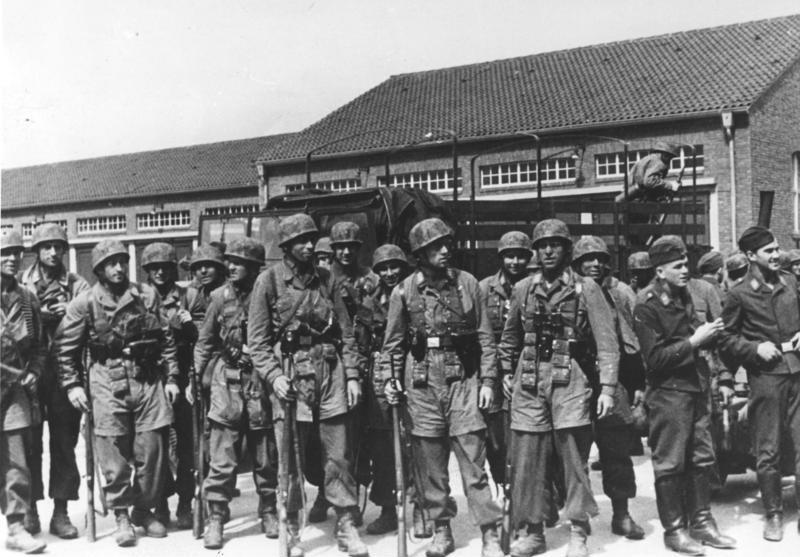
By Kreighton Long. Pictures from May ’40 Miniatures, Warlord Games, Black Tree Designs, Artizan Miniatures, Offensive Miniatures, Perry Miniatures, Wargames Foundry, Gorgon Studios, Crusader Miniatures, 1st Corps, and Westwind Productions.
As one Bolt Action project ends, another begins. Reflecting on my current inventory I notice a distinct lack of dedicated early war options. Within my hobby circle this is the period of World War Two which is notably neglected. Theories as to why range from a lack of US involvement to a distinct absence of the more iconic mid and late war tanks and weapons. In an effort to try to rectify this bias, as well as to challenge myself with something new, I began planning to build and paint an early-war German paratrooper, aka Fallschirmjager, force designed around Case Yellow.
Case Yellow, also known as the Manstein Plan, was the German invasion of the Netherlands, Belgium, Luxembourg, and France. The Fallschirmjagers saw their first deployments in the Poland campaign and then saw their first firefights in Norway. These experiences provided lessons to hone their abilities for Case Yellow. On 10 May 1940 the Fallschirmjagers made arguably their greatest contribution to the war with their successful capture of the Belgian fort of Eben Emael. The raid is worth a look if you’re unfamiliar but I’ll tease you with the note that 85 Fallschirmjagers landed in gliders on top of the fortification consisting of multiple gun emplacements and housing over one thousand Belgian troops. After a few hours of fighting the garrison surrendered and history was made. The Fallschirmjager went on to operate with mixed results in the Netherlands, Greece, their last major airborne operation of the war — Crete, and finally as conventional line-units in Italy, Russia, and Western Europe.
For my early-war Fallschirmjagers I aspire to stay as true to the Case Yellow theme I chose for myself. This means limiting my troopers to the early war smocks. The early war smocks were step-in smocks where the paratrooper had to step into the leg holes, pull the smock up over his shoulders, and feed his arms through the sleeves. These smocks differed from the next generation smocks, issued starting in 1942, that look more like short cut trench coats. By 1941, both the the early war step-in smocks and the coats were issued in the splinter camouflage pattern. As I want to keep my jumpers true to the Case Yellow period I sought out models that exclusively used the early war step-in smock model.
As I started investigating different options on where to get my Fallschirmjager I quickly realized that I was about to be overwhelmed with the possibilities. A feeling of paralysis by analysis started to set in. Below are some of the options I found and a quick summary of what I noticed.
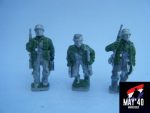
May ’40 Miniatures appears to be an excellent match for Case Yellow Fallschirmjagers. Their sets even include Fallschirmjagers with hollow charges for their raid at Eben Emael and a set with captured Dutch weapons for their fighting in the Netherlands. For someone looking to get painting right away these option is tough to beat.

Warlord Games has a variety of options for Fallschirmjager models. The core is the plastic box set which includes five sprues of six torsos with three being sculpted with the early war step-in smock and three with the mid-war open smock. Warlord offers the widest variety of support weapons and options for Fallschirmjager collectors. For my early-war vision I would have to be mindful of whether or not I’m getting metal models in the mid-war smocks when ordering their support weapon sets.

Black Tree Designs has a range of Fallschirmjager for both early and late war. Most of the model packs I looked at were sculpted with the early war smocks so that’s a plus for Black Tree Designs. There is an excellent variety of support weapons and options which is appealing. Most everything I foresee needing is available. Black Tree Designs features Builder Packs to help save money when ordering multiple packs at a time which is another plus for this option.

Artizan Miniatures features a range of Fallschirmjager modeled for mid and late war actions. Their packs include sculpts of both step-in and open smocks. I’ve painted Artizan miniatures in the past and am a fan of their work. However, as their miniatures are metal they are more difficult to modify than plastics. Additionally, their weapon options are tailored for the mid-war period with no MG-34s available.
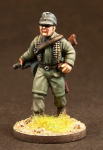
Offensive Miniatures‘ Fallschirmjager range has a ton of character but appears to be sculpted with mid-war actions in mind judging by the open smocks and MG-42s. Certainly worth considering for Fallschirmjagers fighting in North Africa, Italy, Russia, or France after Operation Overlord.

Perry Miniatures includes packs of Fallschirmjager in their German collection. The sculpts look intended for the North Africa campaigns and include open smocks mixed in with step-in smocks. While the metal miniatures look like a joy to paint altering the metal open smocks to fit the step-in requirements of my Case Yellow army will be far less joyful.

Wargames Foundry has four sets of Fallschirmjager. While the miniatures look well sculpted with details such as external knee pads for those tough landings, the limited selection of options makes this a difficult sell for filling in a full Bolt Action army roster efficiently.

Gorgon Studios offers nine sets of Fallschirmjagers. All sets are sculpted with the step-in smock and are an ideal match for early-war Fallschirmjager. This was my first exposure to Gorgon Studios and I will certainly keep them in mind if when I look at either Norwegians or Polish 10th Mechanized Brigade.
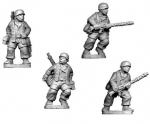
Crusader Miniatures‘ Fallschirmjagers are sculpted for the early-war period with step-in smocks and MG-34s. Their World War Two Platoon Deal is an ideal way to start collecting an early-war Fallschirmjager force.

1st Corps also has a range of early war Fallschirmjager. 1st Corps also offers casualty figures (especially handy as I’ll need to make pin markers for my army), drop canisters, and a supply dump. Easily a one stop shop for getting started with early-war Fallschirmjager.
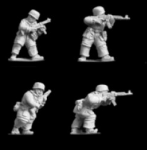
Westwind Productions offers a few packs of Fallschirmjager which appear to be more suitable for late-war action based on their uniforms and the equipment they are sculpted with.
It’s not surprising that a force as famous as the Fallschirmjager have been covered by so many different manufacturers. Among the available options May ’40 Miniatures, Black Tree Designs, and Wargames Foundry stand out the most through my Case Yellow tinted jump goggles. While looking through all the pretty toys I began to feel that I wanted more of a challenge than simply buying some kits ready to go. I have been called a glutton for punishment before. In the end I decided to go with the Warlord Games plastics. This is partially me being cheap, as I already have a healthy pile of Fallschirmjager sprues in my box of shame, a combination of gifts from co-conspirators and freebies from Wargame Illustrated and Warlord Games, and partially the excitement of a challenge. Working with the Warlord sprues will force me to step outside my comfort zone by modifying the jump jackets into step-in smocks, kitbashing to have a unique force, and to practice my green-stuff skills by creating some of the weapons I will need (such as flamethrowers for my Fallschirmpioneers). This will be a slow burn project but I hope to one day have a unique looking army to take to both club and competitive events. Time to hit the hobby bench and start proof testing my ideas. Stay tuned for the next addition where I hope to talk about having more success than sorrow converting the Warlord Fallschirmjager sprues into something worthy of raiding the fortress of Eben Emael.

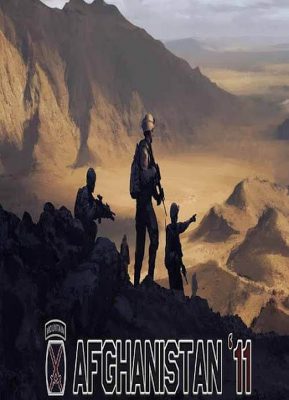 The art of coalition command … in Afghanistan … is to take the resources you are provided with, understand what the strengths and weaknesses are and to employ them to the best overall effect. – David Petraeus
The art of coalition command … in Afghanistan … is to take the resources you are provided with, understand what the strengths and weaknesses are and to employ them to the best overall effect. – David Petraeus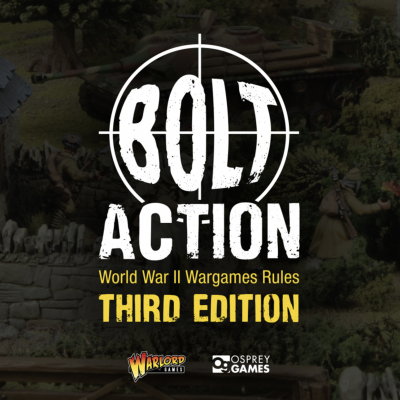


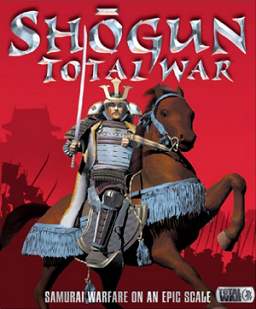 “When you have attained the way of strategy there will be nothing that you cannot understand. You will see the way in everything.” – Miyamoto Musashi
“When you have attained the way of strategy there will be nothing that you cannot understand. You will see the way in everything.” – Miyamoto Musashi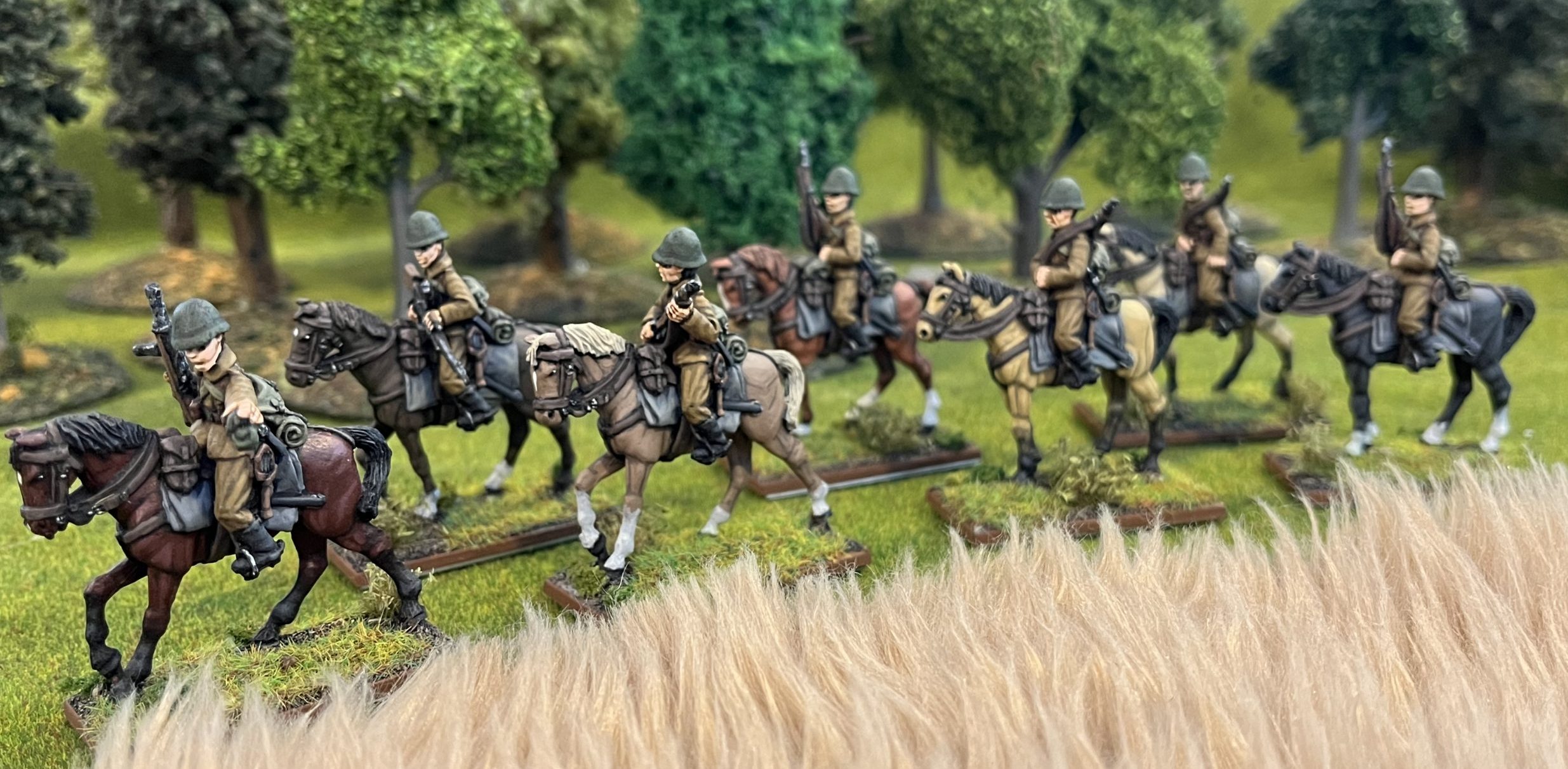
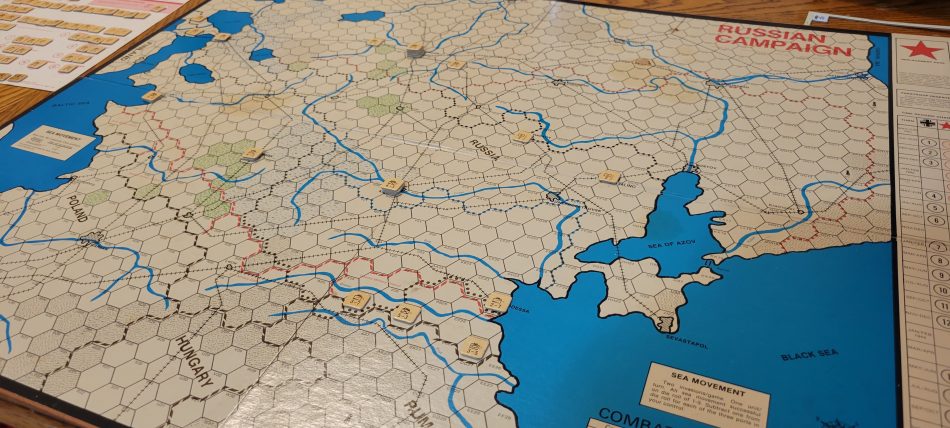
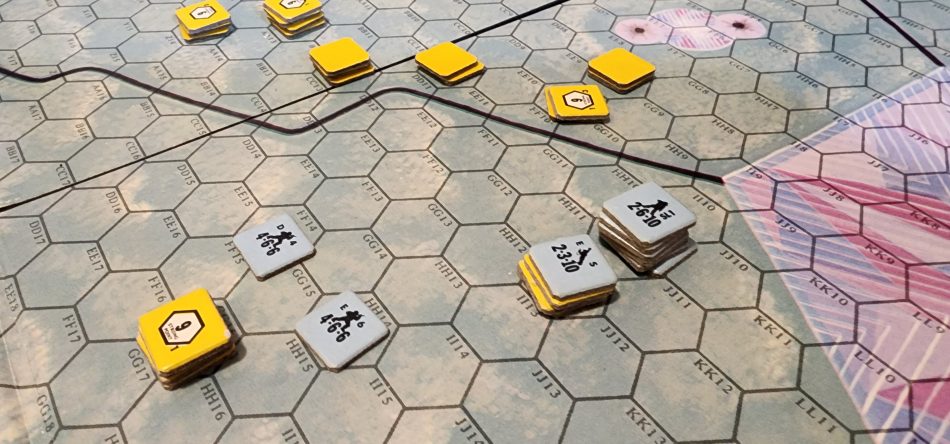
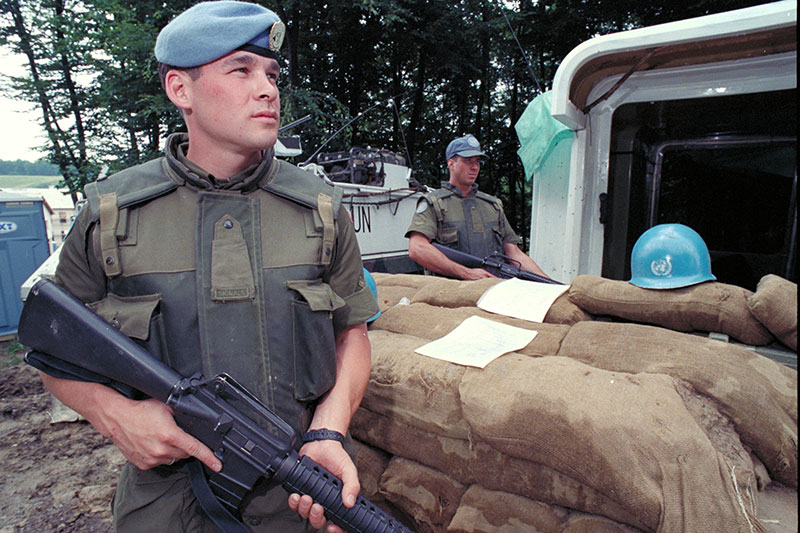
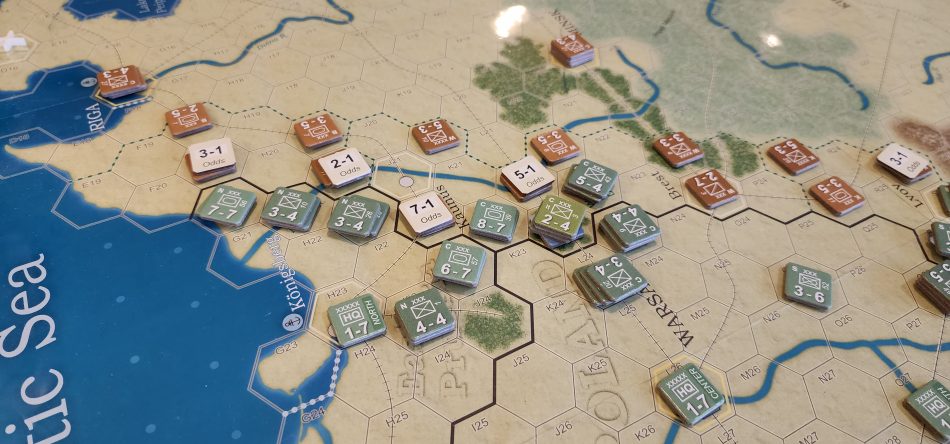
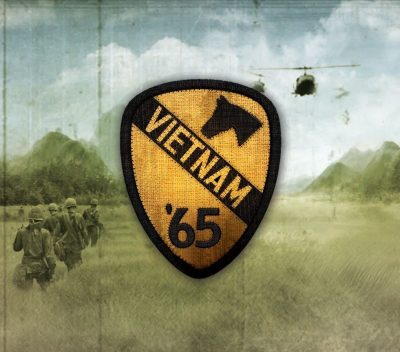 “We are fighting a war with no front lines, since the enemy hides among the people, in the jungles and mountains, and uses covertly border areas of neutral countries. One cannot measure [our] progress by lines on a map.”—General William C. Westmoreland
“We are fighting a war with no front lines, since the enemy hides among the people, in the jungles and mountains, and uses covertly border areas of neutral countries. One cannot measure [our] progress by lines on a map.”—General William C. Westmoreland